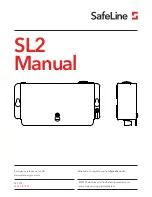
dV-DOSC dV-SUB Manual V3.0
June 2005
50
1.14 APPROVED DIGITAL SIGNAL PROCESSORS
Digital signal processing units supported by L-ACOUSTICS for dV-DOSC include: XTA DP224, XTA
DP226 (or DP6i = fixed install version of the DP226), BSS FDS 366 (Omnidrive Compact Plus), BSS
Soundweb and Lake Contour.
OEM factory presets for these DSP units are distributed via PCMCIA Card (excluding XTA DP6i, BSS
Soundweb and Lake Contour – OEM presets for these units are downloaded via computer) and are
available from L-ACOUSTICS France, L-ACOUSTICS US, L-ACOUSTICS UK or your local
distributor. Preset libraries and upgrades can also be downloaded from
www.l-acoustics.com
.
Since the XTA DP226 is a 2 input x 6 output unit, the DP224 is 2 x 4, the Lake Contour is 2 x 6 and
the BSS 366 is 3 x 6, exact internal wiring of your FOH drive rack and DSP output channel
assignments will vary depending on the selected processor and the application. Carefully consider
your flexibility requirements before selecting the number and type of DSP units to specify.
For full details on the operational and technical aspects of these DSP units, please refer to their
respective user manuals (
www.lake.com.au
,
www.xta.co.uk
,
www.bss.co.uk
).
NOTE: ALWAYS REFER TO THE PRESET DESCRIPTION SHEET (TABLES 16-19) FOR YOUR DSP WHEN
SELECTING PRESETS AND CONFIGURING YOUR DRIVE RACK.
1.15 OEM FACTORY PRESETS
According to L-ACOUSTICS company policy, OEM factory preset parameters are software-protected
and preset data or passwords are not communicated in order to preserve quality control,
confidentiality and to maintain the integrity of presets as part of the dV-DOSC standard.
A lot of engineering and real-world testing goes into determining optimum dV-DOSC presets –
detailed polar measurements and weighted spatial averaging are used to determine component
equalization, crossover points and time alignment delays, for example. As a result, dV-DOSC presets
give the user an optimum starting point – system tuning should be done using band attenuation,
subwoofer time alignment and system equalization using input parametric filters – not by altering
presets - for the following reason:
Without proper instrumentation and spatial averaging, adjustments made at one location (e.g. the mix
position) are not optimum at all other locations within the defined coverage pattern of the system.
When made by ear, such adjustments can be misguided – the user may be in a local room mode (low
frequency pressure maximum or minimum) and/or may be hearing a cancellation or addition due to
crossover misalignment that sounds good at that specific location but what about all others?
Meanwhile, a better result could have been achieved while preserving the power response of the
system (and satisfying WST conditions) by using the correct OEM factory preset and a simple
equalization or output channel gain adjustment or correct time alignment of subwoofers or …
The bottom line is that making sure that dV-DOSC is used properly is in
everyone’s
best interest and
it is up to the Qualified V-DOSC Technician and Certified V-DOSC Engineer to maintain quality
control standards. Quality control starts with a good sound design concept then includes detailed
coverage simulation using ARRAY2004 or SOUNDVISION to determine installation parameters,
accurate installation, correct preset selection and a solid methodology for system tuning. Restricting
access to presets is in no way meant to restrict the creative process – on the contrary, the overall
systems approach is intended to enhance it by ensuring quality control and repeatability
Summary of Contents for dV-DOSC
Page 1: ...Version 3 0 June 2005 dV DOSC dV SUB OPERATOR MANUAL ...
Page 2: ......
Page 18: ...Figure 5 dV DOSC 3 way system configuration ...
Page 143: ...dV DOSC dV SUB Manual V3 0 June 2005 143 Figure 92 dV SUB Line Drawing ...
Page 146: ......
Page 147: ...dV DOSC dV SUB Manual V3 0 June 2005 147 ...
Page 148: ...dV DOSC dV SUB Manual V3 0 June 2005 148 ...
















































